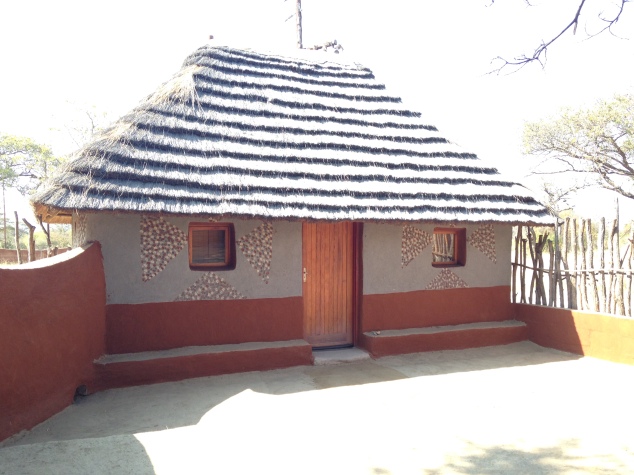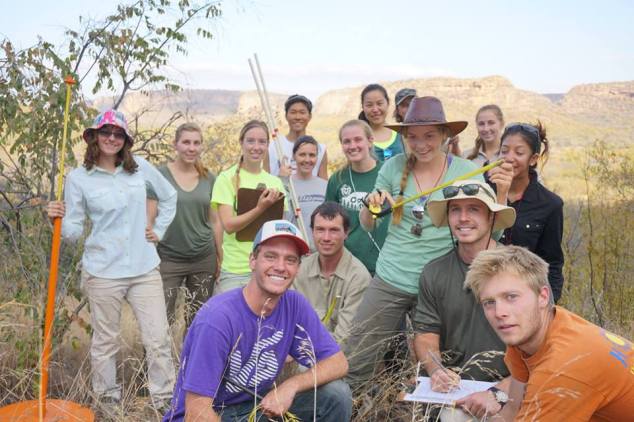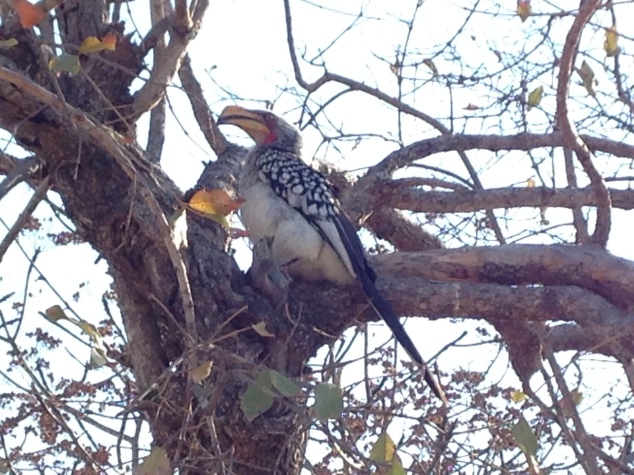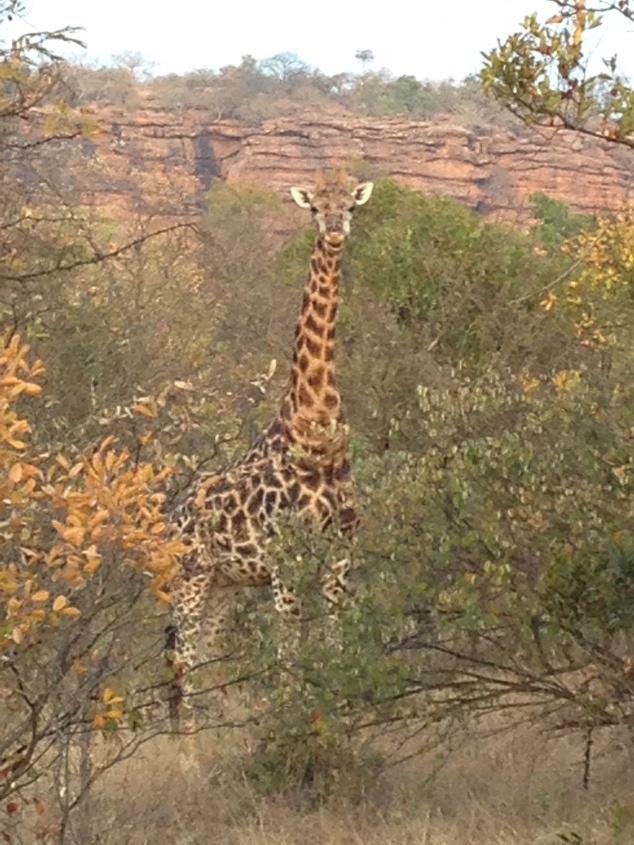Why, hello there! Long time, no see! I know that I’ve fallen behind on my regular blogging schedule, but I have a pretty good excuse… I was just in Africa with no wifi for a month. Though I also failed to blog the month prior to this grand adventure, so I guess I’m technically still at fault. But now I am going to provide you with part 1 of my 3-part story all about my amazing African adventures, so that makes up for it.
I went to Africa with a group called International Student Volunteers, or ISV. I heard about the program from an ISV representative that spoke briefly in one of my lecture classes back in September and immediately knew I wanted to participate. They do trips to a bunch of different places, but Africa was the one that really captured my attention. The basic idea of their trips is that you work on a volunteer project for 2 weeks, and then you get to go on an “adventure tour” and do a bunch of really awesome things for another 2 weeks after that.
So before I get to the tourist-y adventure tour part of my trip, you get to hear all about my volunteer project. For my first two weeks I was in South Africa in the Waterberg Mountain area, staying in a little village called Telekishi. Just down the road from the village was Masebe Nature Reserve. Masebe used to be open for tourism but unfortunately closed to the public in 2005 due to money issues and poaching problems in the area. However, there is a company called WEI, Wildlife and Ecological Investments, that is now doing research to find out if they can eventually reopen the reserve to the public. In order to do this, they need volunteers to help them gather data on the area – that’s where I come in.
What I did for the majority of the first two weeks is the kind of thing that some people find really cool and interesting, and other people think sounds totally boring and lame. If you are of the second variety of people, then you should still be excited while hearing about this because you can just remind yourself how lucky you are that there are funny people out there in the world, such as myself, that enjoy it so that you don’t have to get stuck doing it instead. We had two primary tasks as volunteers – habitat assessments and bird point counts. Habitat assessments basically consisted of walking out into a specific area of the bush and identifying trees, measuring the height and the density of the grass, determining if animals have grazed in the area, and a few other assorted things of that nature. We split into groups of 7 to conquer our habitat assesments and each one of us within the group had our own unique job – I was given the exciting task of measuring the height and density of the grass. It took us about an hour to do one habitat assessment, however some took longer than others, depending on the area we were in. Some areas had lots of scary demon bushes that were full of thorns so they took longer to get through because we had to avoid being stabbed to death. Others had grass that was taller than me so I took longer to measure it because I needed to call for assistance from someone of a taller variety than me. And others had a ridiculous amount of trees and it simply took forever to identify and measure all of them. Here is a picture of my habitat assessment group on our last day of volunteer work. I’m on the left in the rockin’ pink sun hat. The giant orange stick I’m holding is called a Disk Pasture Meter and was used to measure the density of the grass.
On top of these habitat assessments, we also conducted bird point counts. In order to do a bird point count, we basically had to stand still, and quietly, for 10 minutes while writing down information about any birds that we heard or saw in that time frame. I personally liked the bird point counts because by the end of the two weeks I could actually identify about 12 different african birds by their calls. My favorite bird was the yellow billed hornbill, which is what Zazu is for any Lion King fans out there. For your enjoyment, I have included a picture of the yellow billed hornbill. This picture wasn’t actually taken on the reserve, I got it while at Kruger National Park during my adventure tour – but you’ll hear all about that part of my adventure later. As you can see from the picture, Disney lied to us when they made Zazu blue. But it’s Disney, so I guess I’ll forgive them.
As most of you are probably aware, I’m a little obsessed with giraffes. Okay, maybe more than a little. Which is why I was more than excited on days that we finished our bird point counts and habitat assessments early and also got to go on giraffe ID drives – which basically means we drove around the reserve hoping to see giraffes, and when we did see one we stopped and took pictures of it to identify it based on its spots. The point of this was to see what areas of the reserve the giraffes typically spent time in, and to check if there were any giraffes in the reserve that the people running the reserve didn’t already know about. Masebe has 14 giraffes in total and we saw 5 of them – they were super cool with knobs. Here is one of the giraffes that we saw on the reserve.
Every day for the first two weeks we were up at 6 AM and would leave Telekishi by 7. We would go out and do 3 bird point counts and a habitat assessment, followed by a giraffe ID drive on some days. We would come back to the village for lunch and then we would participate in some sort of discussion, usually with a topic along the lines of sustainability or conservation. Then we would go back out to do one more habitat assessment, come back for dinner, and just chill around the fire for the rest of the night. There were definitely a few aspects of life in Telekishi that took some getting used to, such as the tap water that was safe to drink but came out red and tasting like iron, having to keep an eye out for black mambas on our hiking trails, never knowing if we would get hot water or water pressure in our showers, and getting used to living in huts made out of dried out cow poo. But overall our experience staying at Telekishi was totally worth the rusty water and cow poo huts. But before I get ahead of myself, first thing’s first. I think it’s time to show you a picture of my cute little cow poo hut.

Now that that is out of the way, I can continue telling you how awesome the experience was. We were able to experience the culture of the surrounding area, and we learned so much about the animals on the reserve and about conservation through the discussions we had with our leaders and the WEI field guides that we worked with. For your entertainment, I have gone through the trouble of writing up a list of my favorite animal facts that I learned on my trip. Here they are, you are welcome.
- 1 – a group of giraffes is called a tower or a journey
- 2 – a group of zebras is called a dazzle
- 3 – a group of rhinos is called a crash
- 4 – female warthogs have one set of tusks while males have two. That’s right folks, Pumba is a girl. You can thank me later for crushing your childhood.
- 5 – male giraffes fight each other by slamming their necks and heads into each other. As a result, you can tell if a giraffe is a male by looking to see if it has funny shaped knobs all over its head.
- 6 – There is a creature called a spring hare that is possibly the funniest animal I’ve ever seen in my life. It’s the size of a bunny but has a giant paddle tail and hops around like a kangaroo with his front feet off the ground. If you have never seen one you really need to go online and find a picture. We saw one on a night drive through the reserve and it literally just hopped around in circles in front of the truck – they aren’t the brightest of creatures.
- 7 – The chinspot batis (a south african bird) has a call that sounds exactly like the “Three Blind Mice” song.
- 8 – Baboons usually travel in groups called troops, however occasionally two males will fight for a position as the alpha, and as a result the losing baboon is kicked out of the troop. There is one specific baboon that we named Bobby that was kicked out of his troop by another male and now hangs out around Telekishi. He has been hanging out in the area for years and has never been a problem, but recently he has gotten a bit too close for comfort. We had to go to another building to use the bathroom and we were under strict orders to look out our windows and check for Bobby before going outside at night so that we could avoid being mauled to death by a monkey.
- 9 – The “Big 5” (rhinos, elephants, buffalo, lions, and leopards) are considered the 5 most dangerous animals to hunt. However, hippos are kind of the “honorary Big 6” because hippos alone kill more humans a year than all of the big 5 put together. I always knew they were scary.
- 10 – There is an animal called a hyrax that is nicknamed the rock rabbit. It looks like a large rodent and is brown and fluffy, but it is actually more closely related to elephants than rodents. Who knew that elephants had small fuzzy cousins that spend their time sun bathing on rocks?
The discussions that we had during our volunteer project kind of put me on an emotional roller coaster. I loved learning about how we can be conservative and sustainable to help the earth, but it’s also sad to realize how messed up the earth really is due to human impact. We watched a video called “The Story of Stuff” during one of our discussions that really got me thinking. If you haven’t seen it before, I highly recommend it – typing the title into google brings it up right away. The basic idea of the video is that as humans, we have established a linear process in which we take resources from the earth, turn them into “stuff”, sell the stuff, buy the stuff, and then throw the stuff away. However, having a linear system is not the best plan because we only have a finite amount of resources. It’s sad to think about the fact that this is happening, but the video also talks about how humans are the ones who created the system, so we also have the power to change it. In a way it’s uplifting to think about the fact that we can change it. We just need to have enough people who make small changes in order to eventually make a big change. If everyone says “the actions of one person won’t make a difference”, then we never will. But if everyone believes that it’s possible, I think it would be.
Anyway, another big topic for discussion at Telekishi was conservation of animals. We talked a lot about the poaching of rhinos, which is a very sad reality. They are basically being poached for their horns because some cultures believe that the horns have healing powers. However, I knew about the rhino poaching before my trip. What I didn’t know is that there is also an elephant problem right now, except it’s the exact opposite of the rhino problem. Years ago elephants were starting to die out, and humans worked to save them. However, the efforts worked a little too well. Now there are more elephants in the wild than there ever have been before. Kruger National Park is meant to hold about 7000 elephants and there are currently around 15000. This can be a problem because elephants are obviously pretty huge and have a tendency to knock down trees and be destructive. People have tried to come up with solutions for this but there is no one clear answer. One possibility is culling the elephants, though this is a highly debated issue because it can be seen as inhumane. Another option is transporting some of them from areas with too many elephants to areas that aren’t as populated by elephants, but this can be expensive. Another option is to perform a contraceptive surgery on the elephants so they can’t reproduce in later years, but this can also be costly. It makes me sad to think about the fact that the rhinos are dying out while the elephants are becoming so populated that people are considering culling them. Sometimes life just doesn’t seem fair. But, since humans are a big reason of why these issues are happening in the first place, I like to think that we have the ability to fix it too. I know that this part of my post may seem a bit depressing, but the least I can do for the cause is to let other people know about it. So here I am, sharing my knowledge with you so that you can tell everyone you know and maybe just maybe someone will find a solution to save both the rhinos and the elephants.
Well, there’s my first two weeks in a nutshell. I loved working in the bush and catching glimpses of animals, I loved learning about the animals and about conservation, and I loved being able to spend the two weeks with like-minded people who not only didn’t mind rusty water and cow poo huts, but who embraced it with me. And, I even made it through the whole 2 weeks without being mauled by Bobby the baboon, so I would call that a success. Maybe I’ll be back again some day in the future to see Masebe Nature Reserve as a tourist rather than as a volunteer. I would love for it to reopen some day so that more people can see how awesome it is!
Well, stay tuned for part 2 of my trip, bugs! There’s a lot more to tell you about!
Love,
Laney-Bug ❤



